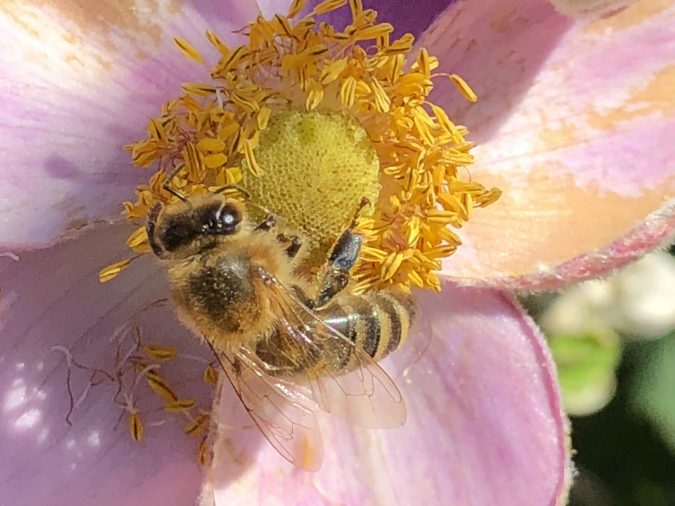Problems for bees and bumblebees.

The decline in many insect populations across the globe is worrying, threatening economies and ecosystems. A German study in 2017 indicated that the mass of flying insects (in various natural areas) had fallen by some 70%+. The decline in insect populations has been associated with habitat fragmentation, the spread of agriculture and the use of pesticides, with the neonicotinoids being particularly associated with damage to bee and bumblebee populations.
Recent work at the University of Konstanz suggests that when bumblebee colonies are exposed to limited resources of nectar and exposure to the herbicide - glyphosate, then their colonies may fail. Bumblebee colonies need a good supply of nectar as a ‘fuel’ in order to maintain a constant brood temperature (of approximately 32oC). Only at this sort of temperature does the eggs & larvae develop quickly from egg to adult, and the colony grow from a single queen to several hundred bees. If the temperature is not maintained, then the brood develops slowly or not at all. The loss of wild flowers (and their nectar) plus the use of the herbicide (in agricultural areas) looks to be a problem for the bumblebees.

Just as bumblebees are facing problems, so are honey bees. The bees have faced infections with a variety of viruses, such as the deformed wing virus. This virus affects wing development so that the wings are 'stubby' and useless, plus they may be deformities of the abdomen and leg paralysis; the insect cannot function and dies. The virus is transmitted by the Varroa mite - a parasite (that also feeds on the bees’ tissues). The virus was originally identified in Japan in 1980’s and is referred to as DWV-A. However, a new form of the virus (DWV-B) was identified in the Netherlands in 2001 and it is spreading across Europe, and to other continents. Sadly, this variant of the virus kills bees faster and is more easily transmitted (according to research at the Martin Luther University).

Comments are closed for this post.
Discussion
Sorry, a number of links have been affected
The link is here : https://www.uni-konstanz.de/en/university/news-and-media/current-announcements/news-in-detail/wie-glyphosat-die-brutpflege-bei-hummeln-beeintraechtigt2/
the link to University of Konstanz simply directs to Apple.com.
I was curious as to when the exposure to Glysophate happens, as it supposedly has a short half-like once it enters the environment. I was wondering if winter spraying when no flowers are present would work, specifically regarding removal of invasive plants that seem to stay active in the winter months.

Where do you think the bees go in winter?
Wild bees seek refuge from the weather,in cocoons, nests, hollow stems. How would you isolate them? Any spray applied to anywhere bees exist will find its way into the ecosystem,leaf litter, water etc.
Best spray is no spray. We have care of considerable habitat and years of removing by hand bit by bit has been very effective. Conservation takes time, its never a quick thing to achieve, but the effects of effort can last very many years and we have many wild bees.
Rob
30 November, 2022